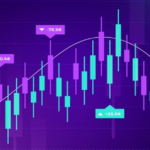If you are new to trading, the following definitions and examples will help you become familiar with the rules and guidelines of the foreign exchange market. This brief overview is designed to deepen your existing knowledge.
Financial Instruments
These include currency pairs (Forex), CFDs on indices, commodities and spot metals. All instruments are speculative and complex by nature, and traders must be familiar with the risks involved. On the Xtreamforex website you will find a wide range of educational materials to help you become familiar with the terminology and trading instruments of the financial markets.
Leverage & Margin
Leverage is offered by brokers to maximize the buying power of traders by allowing them to deposit a small amount of money and trade larger volumes. Leverage is expressed in terms of a ratio, i.e. if it is 1:100, for example, the trader’s buying power is increased by 100 times. He can maximize either the profits or the losses of a trade.
Margin: Since the trader is allowed to use more capital (due to leverage) than he or she has deposited, the broker requires that a certain amount remain in the account to maintain an open position.
The leverage and margin you are entitled to with Xtreamforex depends on your trading skills and experience.
To calculate your margin in relation to your leverage, please use the Margin Calculator.
Fundamental and Technical Analysis
Fundamental analysis examines risk-related factors such as the economic, political, and environmental forces that move prices up, down, or sideways.
Technical analysis is the study of prices with the goal of determining the direction of the market. The principles of technical analysis are:
All known fundamentals are reflected in price charts.
Prices move in patterns called trends.
Price patterns that have worked well in the past are likely to work in the future.
Risk Management
Trading involves certain risks. As with any financial contract, the inherent risk of the institution or party with whom you have entered into the contract is known as ‘counterparty risk” Counterparty risk is the risk that one of the parties to the contract will not perform its contractual obligations.
Another type of risk arises from market forces, which are determined by the economic factors that affect the price of the financial instrument in question. For example, if you believe your base currency will appreciate against the quote currency and unexpected political unrest causes the base currency to fall, you risk losses.
How Xtreamforex helps you manage risks
Margin Call – is a signal from the broker that your account has exceeded the required margin percentage. In other words, there is not enough equity in the account to continue supporting your open positions.
Take Profit – A price level you set on your trading platform to lock in potential profits. Example: If you buy 1000 EUR at the exchange rate of 1.20000 EUR per USD, this equals 1,200 USD (1000 x 1.20000).
If a take profit order is placed at 1.30000 and the exchange rate rises from 1.20000 to 1.30000, the take profit order will close your position with a profit of 100 USD.
Stop Loss – A price level you set on your trading platform to protect your capital from price movements in the opposite direction. Example: If you trade the EURUSD and set the stop loss at 1.27000, your open position will be closed as soon as the EURUSD falls below 1.27000.
Stop Out – the level at which a trading platform starts to automatically close your least profitable positions to prevent further losses in case of a significant price movement in the opposite direction.












0 Comments